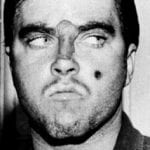 Mysteries
Mysteries  Mysteries
Mysteries  History
History 10 Surprising Stories About the Texas Rangers
 Humans
Humans 10 Philosophers Who Were Driven Mad by Their Own Theories
 Miscellaneous
Miscellaneous 10 Video-Game-Worthy Weapons and Armors from History
 Weird Stuff
Weird Stuff 10 Psychics Who Accurately Predicted Wartime Events
 The Arts
The Arts 10 Pieces of Art Inspired by a Broken Heart
 Health
Health 10 Science Fiction-Sounding New Medical Treatments
 History
History 10 Surprising Facts About the Father of Submarine Warfare
 Space
Space Ten Astonishing New Insights into Alien Worlds
 Weird Stuff
Weird Stuff 10 Bizarre Summer Solstice Rituals Still Practiced Today
 Mysteries
Mysteries Top 10 Haunting Facts About the Ghost Ship MV Alta
 History
History 10 Surprising Stories About the Texas Rangers
 Humans
Humans 10 Philosophers Who Were Driven Mad by Their Own Theories
Who's Behind Listverse?

Jamie Frater
Head Editor
Jamie founded Listverse due to an insatiable desire to share fascinating, obscure, and bizarre facts. He has been a guest speaker on numerous national radio and television stations and is a five time published author.
More About Us Miscellaneous
Miscellaneous 10 Video-Game-Worthy Weapons and Armors from History
 Weird Stuff
Weird Stuff 10 Psychics Who Accurately Predicted Wartime Events
 The Arts
The Arts 10 Pieces of Art Inspired by a Broken Heart
 Health
Health 10 Science Fiction-Sounding New Medical Treatments
 History
History 10 Surprising Facts About the Father of Submarine Warfare
 Space
Space Ten Astonishing New Insights into Alien Worlds
 Weird Stuff
Weird Stuff 10 Bizarre Summer Solstice Rituals Still Practiced Today
10 Fascinating Case Studies From Sigmund Freud’s Career
Sigmund Freud’s ideas and theories might look outdated today, but there’s no denying the influence that he’s had on the advancement of psychology and psychoanalysis techniques. We’ve all heard the stories about how everything goes back to sex with Freud, but it’s worth taking a closer look at some of his most fascinating patients.
10 Mathilde Schleicher

Mathilde Schleicher was one of Freud’s first patients when he began his practice as a “nerve doctor” in 1886. Her story is rather heartbreaking. Schleicher was a musician whose troubles started in earnest when she was abandoned by her fiance. She was always prone to migraines, and her mental health issues spiraled out of control, causing her to fall into a deep, dark depression. She was referred to Freud for treatment, and he began a series of hypnotherapy sessions. That was in April 1886. By June 1889, she had dug her way out of the depression and was so grateful for all his help that she even presented him with an inscribed textbook, thanking him for all he’d done for her.
Within a month, however, her depression had turned into mania and insomnia. She talked constantly about the fame and fortune that she was going to find with her music career, and she also experienced regular convulsions. Freud referred her to the private medical practice and clinic of Dr. Wilhelm Svetlin, where she was diagnosed not only with what would later become known as manic depression or bipolar disorder, but also as a nymphomaniac, since she regularly stripped and called out for Freud. Other notes suggest that her problems were even deeper. She apparently believed that every one of her bowel movements was a birth and would try to hide her “children” beneath her pillow.
Schleicher spent the next seven months on a continuous cocktail of sedatives like opium, morphine, chloral hydrate, and even cannabis. Gradually, and perhaps unsurprisingly, the manic episodes subsided, and she was released in May 1890. She died in September, with Freud still treating her now-returned depression with chloral hydrate and a new drug called sulfonal. No one noticed that her urine had been filled with blood—a sign of liver damage caused by her medication—until it was too late.
9 Little Hans

Freud worked with a five-year-old boy he called “Little Hans” who was brought to Freud by his father. The father was looking for help with Hans’s fear of horses. Given that he was five, that his family lived near a busy coach inn, and that Hans hadn’t had great experiences with horses, it’s not surprising that he was afraid of them. They were big, and they were scary. Horses that pulled carts especially terrified him, in no small part because he had seen one (forced to pull a wagon full of people) collapse and die on the street in front of him.
Because he’s Freud, you can probably guess that his explanation for the little boy’s fear wasn’t just due to witnessing the traumatic death of one. According to Freud, Hans was particularly scared of horses that had black muzzles, and he saw this as an association with his father’s mustache. He didn’t like horses wearing blinders, either, which Freud took to mean that he was associating them with his father’s glasses.
Eventually, Freud diagnosed the little boy’s fear of horses as an extension of his Oedipus complex. The horse represented his father, largely because of the mustache-and-glasses comparison, along with the tendency of male horses to be very well-endowed. Little Hans, Freud said, was right in the middle of developing an intense, sexual love for his mother and saw his father as a rival for her love and attention. His father was, of course, considerably bigger and stronger than he is, leading to the development of a fear not only of his father, but, by extension, of horses.
Because much of the therapy was done with Hans’s father acting as intermediary, Freud determined that his fear of horses wasn’t going to be going away anytime soon, as his therapy was dependent on the person whom he was afraid of. When Freud sat down to talk to the boy, he reported that everything that went on in the counseling session only supported his theories and what he had already determined about the Oedipus complex.
Don’t worry about what became of Little Hans; Freud followed up with him when he was 19. Not only had he grown up to be completely normal, but he couldn’t even remember any of what he’d believed when he was five.
8 Bertha Pappenheim (Anna O)
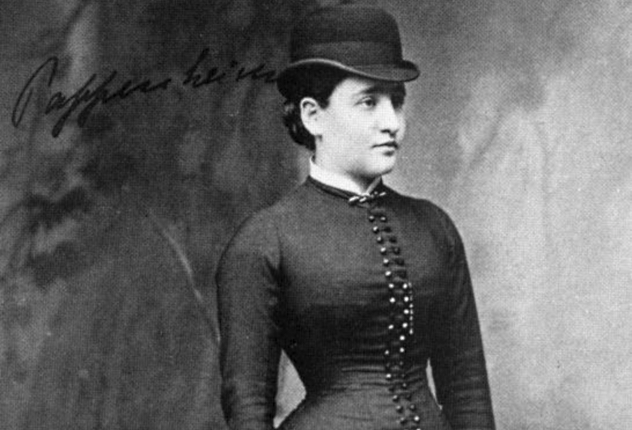
For years, this patient of Dr. Josef Breuer and Freud’s was referred to only as “Anna O” in order to protect her real identity—Bertha Pappenheim. Pappenheim began treatment with Breuer for a strange sort of hysteria that began when her father fell ill and got worse when he ultimately died from his illness. She was suffering from a wide range of symptoms, including mood swings, hallucinations, a nervous cough, destructive outbursts, and partial paralysis. At times, she also forgot how to speak her native German tongue and was able to only read and speak in English and French.
Breuer spent hundreds of hours with her, getting her to talk through the problems at the root of her suffering. At first, she would only speak in fairy tales, making up stories about what she was thinking and feeling in what she called “chimney sweeping.” Gradually, he was able to hypnotize her to take her back to the moments that disturbed her the most, encouraging her to talk about them, forming the basis of a therapy method that’s pretty familiar today.
Just how much of her mental illness was real and how much of it was a way to keep the attention of her therapist has been up for debate. Freud, who had been a close friend as well as colleague of Breuer’s (Freud even named his oldest daughter after Breuer’s wife), condemned him as being a bit foolish for absolutely missing the sexual component of her treatment. He argued that clearly, part of her problem was her absolute infatuation with Breuer. Freud was so outspoken about his belief that it led to the sudden, bitter end of the friendship.
Publicly, Freud used Pappenheim’s case as the basis for his work in psychoanalytic therapy. At the same time, however, he lambasted Breuer to his students and used the case as an example of what can happen when a therapist ignores what are clearly sexual fantasies. Freud claimed that Pappenheim’s heartbreak over her father’s death was actually because of the incestuous, sexual fantasies she had toward him. She transferred these fantasies to Breuer as the new authority figure. According to Freud, Breuer had told him of an episode late in her treatment where he had fled her home after finding his patient in the grip of “hysterical” (and false) childbirth. She had become convinced that she was pregnant with Breuer’s child. Pappenheim’s horrified estate denied that any of it was ever true when her real identity was released after her death.
7 Irma’s Injection
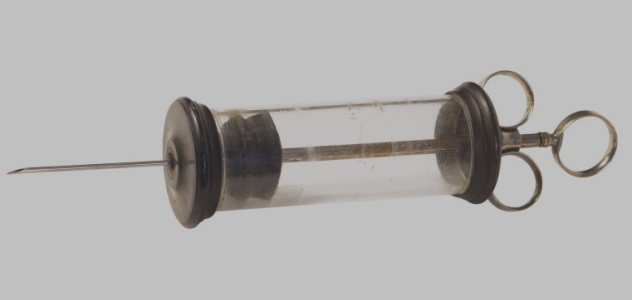
Freud wasn’t above diagnosing himself when it came to proving his theories, and one of his studies on dreams explored the meaning of one of his own dreams. He called it “Irma’s Injection.” In the dream, one of his patients, Irma, appears to him at a party. He notices that she’s looking even more ill than usual, and he scolds her for not listening to his diagnosis before. Other doctors appear in the dream, and they, too, examine a hesitant Irma and confirm Freud’s diagnosis. He also notes that in the dream, he knew what the source of the problem was—an injection, given by another doctor, which Freud thought was an irresponsible, thoughtless thing to do. He points out that the needle that was used probably wasn’t even clean.
The dream checked off all the boxes when it came to Freud’s own desires and wish fulfillment. He said that chief among his deepest desires was to be able to prove that an illness comes from someone else. He could blame other doctors for treating her wrongly (using dirty needles), and he could blame the patient, too, for not doing as she was told by her doctors. He said that he was quite happy with his proof, and her continued suffering wasn’t his fault. Analyzing Freud analyzing himself, it’s been suggested that Freud’s guilt over Emma Eckstein could be directly applied to Irma’s Injection.
6 Ernst Lanzer (Rat Man)

Ernst Lanzer was a monumental case for Freud, allowing him to see if the same psychoanalytical techniques that he’d been using to treat hysteria would work on other patients with other conditions. In the case of the Rat Man, it was obsessive thoughts.
When Lanzer came to Freud, he was afflicted with an impressively large range of obsessive thoughts. Lanzer feared that he would eventually succumb to the thoughts he had about cutting his own throat, and he had an absolutely paralyzing fear that something terrible was going to happen to either his father or a young woman whom he rather fancied. He also had a major fear of rats after overhearing a story while he was in the army about a particularly horrible torture that he became terrified would be used on himself, his father, or the aforementioned lady. The torture in question involved rats being placed in a bucket, the bucket turned upside down and pressed against the guilty man’s buttocks, and the rats being allowed to eat their way inside via the anus. It’s clearly a distressing image.
Freud’s first observations were of an expression on the Rat Man’s face, which seemed to indicate that he was pretty excited about the whole idea of some anus-entry rats. He was diagnosed with an Oedipus complex that led to an emotional imbalance between love, hate, and fear, all directed, in varying amounts, toward his lady, his father, and his rats. Freud also brought up what he believed was the powerful symbolism of the anus rats, which involves preoccupations with cleanliness, a comparison between money and excrement, and the symbolism of rats as children, linked to the childhood belief that babies are born through the anus. Freud also found that the one time that Lanzer’s father had ever spanked him occurred about the same time (when he was around five years old) that a governess let the boy touch her naked body, cementing the association between the two things.
Lanzer’s case is also unique in that it’s the only case in which we have Freud’s case notes in addition to his official report, showing that there were some things that were definitely left out of final drafts, like Freud’s lack of neutrality when it came to things like sending his patients postcards when he was away on holiday.
5 Ida Bauer (Dora)

Ida Bauer’s troubles started long before her father took her to Freud in the hopes of curing her of her hysteria. They started in earnest when her mother’s obsession with cleanliness (after learning that she had been given a venereal disease by her husband) led to Ida’s complete breakdown at only seven years old, which was treated by hydrotherapy and electric shock.
Years later, Ida was propositioned by a family friend—the father of the children she used to babysit and the husband of Ida’s own father’s mistress. Ida refused, and her refusal triggered a hysterical, downward spiral into depression that went as far as threats to kill herself. Freud, who had treated her father for his venereal disease, was asked to help Ida as well.
Freud diagnosed Ida (or Dora, as his published work called her) as suffering not because of the unwanted advances from a once-trusted family friend, but from a repressed lesbian attraction to her would-be suitor’s wife. Her attraction to the woman was further complicated by the fact that she was already Ida’s father’s mistress, making the relationship between Ida and her father a strained, competitive one. Freud interpreted a dream for Ida: Her family’s house is burning down, and while Ida’s father just wants to get them out of the house, her mother wants to look for a jewelry case. The case, Freud says, symbolized Ida’s genitals, which her father had failed to protect.
Ida cut her treatment with Freud short. She continued to struggle with mental illness for the rest of her life, which ended in 1945. After a lifetime of resistance to turning into her father, she effectively became her mother, acquiring a fanatic devotion to cleanliness. Ironically, she also continued to stay in touch with the family that started it all, particularly her father’s mistress, who became her favorite bridge partner.
4 Fanny Moser

At a glance, Fanny Moser had everything one could possibly want. She was in a loving marriage, had two children, was heiress to an old, aristocratic family, and had married into a family known for their exquisite Swiss watches. Just a few days after the birth of her second daughter, her husband died of a heart attack, and his son from a previous marriage began spreading rumors that Fanny had killed him. After a long, scandalous court battle to clear her name of the accusations, she sold the Moser watch company, gave a huge amount of money to the construction and support of several hospitals, and became more and more known for her nervous condition. She went from doctor to doctor, trying all the new cures, but nothing worked.
She first consulted with Josef Breuer, and Freud was also brought in on the case when she was moved to a sanatorium in Vienna. Suffering from severe depression and nervous tics, she was hypnotized by Freud and encouraged to recount every trauma that ailed her, with the end goal of erasing it from her memory. Traumas ranged from the death of her husband to a scary toad she once saw. Although her condition seemed to improve, it wouldn’t for long. Less than a year later, she was back in a clinic. Even though she claimed a strong dislike for Freud (blaming him and Breuer for the poor relationship between herself and her daughters, which stemmed in no small part from her outrage that one of them wanted to be a scientist), she returned again and again as a patient.
She continued to relapse in spite of repeated treatment. Estranged from her hated younger daughter and refusing aid from her older daughter (who became an accomplished zoologist), she instead turned to a lover who would extort millions from her. She died in 1925. Freud wrote to her daughter, apologizing for his failure in diagnosing the correct nature of their relationship and their estrangement.
3 Hilda Doolittle (H.D.)

Hilda Doolittle was a writer and a poet, and through a series of letters she wrote while under Freud’s care and a follow-up book, we have the most complete documentation of his actual methods of analysis and therapy.
Doolittle gave birth to a stillborn child in 1915. After that, she gave birth to a daughter in 1918. Recovering from the birth and a prolonged illness, she and her companion, Winifred Ellerman (Bryher), headed to Greece so she could recover. Along the way, she had a brief romance with one of the men on their ship. (Her husband, who wasn’t the father of her child, had long since left.) Doolittle was included in every part of the marriage between Bryher and Robert McAlmon. When McAlmon was incapable of putting up with the two women, he left and was replaced by Kenneth Macpherson. Bryher and Macpherson married, adopted Doolittle’s daughter, and included Doolittle in their threesome partnership. Freud must have loved hearing this story.
Perhaps strangely, one of the things that doesn’t turn up either in Freud’s case studies on “H.D.” was the question of sexuality. Regardless of her rather confused personal life, Doolittle went to see him because she was suffering from writer’s block. His therapy worked; she would go on to write Tribute to Freud, an entire memoir documenting their sessions and their personal connection. Her writing after her therapy sessions would explore many of Freud’s theories, from the parent-child relationship to gender identity, in a literary format.
Doolittle’s letters also talk about the others that sat in on their analysis and therapy sessions—Freud’s dogs. Either one or both of his dogs, described as chows that looked like little bears, were always present and were known to cause quite a distraction. Doolittle talks about them fighting and one instance where two puppies were introduced to the chaotic mix, a strange setting for a therapy session, no doubt.
2 Daniel Paul Schreber
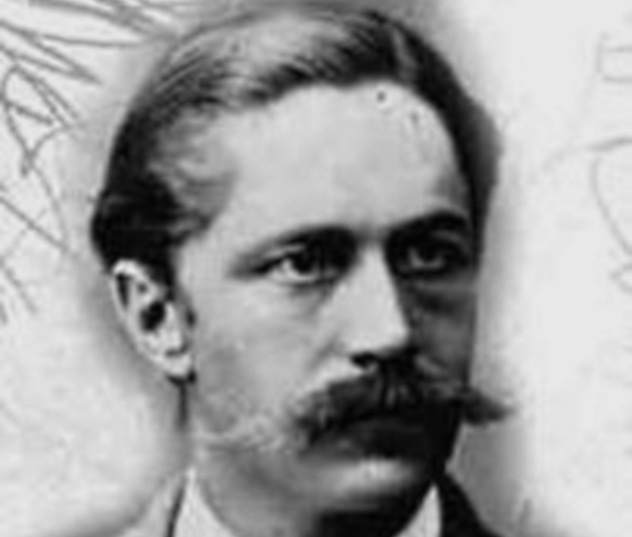
Freud analyzed the case of German judge Daniel Paul Screber with nothing more to go on than Schreber’s own memoirs. Initially attracted by phrases like “soul murder,” Freud found in Schreber a fascinating story of psychosis.
The story started in childhood. Schreber’s father was a doctor who taught that children should not be allowed to cry (and should be beaten until they stopped), given baths in cold water to make them tougher, and forced to wear an orthopedic device at least between the ages of two and eight to ensure that they stood up straight all the time. A child’s day was to be rigidly scheduled, and if the child missed switching from one activity to the next, they went hungry. If punishments and beatings needed to be administered, the child must be made to go to the punisher, so they wouldn’t hold a grudge.
His father died when Schreber was 19, and when he was 35, his older brother committed suicide. Schreber himself suffered a mental breakdown after being defeated in a run for political office. Committed to a hospital, he was diagnosed as highly sensitive to stimuli (particularly noises), highly emotional, a hypochondriac, and suffering from speech impediments. He was released after six months.
He enjoyed eight years of relative normalcy, but he relapsed, and this time, his hospitalization lasted for another eight years. It was during those eight years that he wrote the book that Freud was so fascinated by. This was also the period during which he believed his body was being turned into the body of a woman (with assistance from little men who lived in his feet and ran the pumps that evacuated his old organs and pushed in the new) and that his ultimate purpose in life was to become pregnant with God’s child.
Freud concluded that Schreber’s delusions centered around first the man who was treating him, Professor Flechsig, and then, later, God. The idea that he needed to become a woman in order to fulfill his purpose in life—become the mother to a new race of men—indicated that Schreber still feared his father (rightfully so), and latent fears of castration performed by his father manifested themselves in a belief that he was becoming a woman. When God became the central figure to his delusion, Flechsig became a hated figure rather than a savior, suggesting to Freud that Schreber was also dealing with an intense, sexual attraction to Flechsig. When that wasn’t fulfilled, the Flechsig role morphed into the role of God, with Schreber filling the subservient, female role his father’s abuse had pushed him toward.
1 Sergei Pankejeff (Wolf Man)
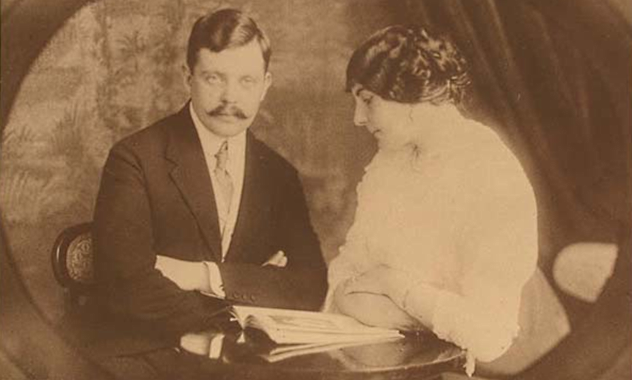
Born in 1886, Sergei Pankejeff would be haunted by death, depression, and suicide for most of his life. Depression was chronic in his family. In 1906, his sister committed suicide, followed by his father in 1907. Even his wife would later commit suicide in 1938. When he began suffering from depression, he sought help.
Freud saw him as a patient from 1910–14, concentrating on a dream that he remembered having as a young child. It involved him sleeping in his bed and waking to look out of an open window. There was a walnut tree outside, and in the tree sat six or seven giant white wolves, watching him. Although he was originally diagnosed with what Dr. Emil Kraeplin called “manic-depressive insanity,” Freud disagreed and diagnosed him with “obsessional neurosis” that stemmed from episodes of anxiety that began at a young age which were colored with the religious upbringing that his mother imposed on him.
Freud believed that the wolf dream was the key to unlocking what was going on in Pankejeff’s psyche. Animals, Freud said, were often a substitute for a father figure in dreams. The idea of the window opening and the predatory wolves waiting and watching was clearly a sign of a sexual fantasy that Pankejeff was repressing, in which his father was the predator and he was the prey. Part of that, he said, came from a repressed memory that had surfaced. Supposedly, Pankejeff was only 18 months old when he witnessed what he had thought was a violent act between his mother and father, one that he had come to understand was somehow pleasurable.
Freud also looked at the relationship between Pankejeff and his pious female role models—his mother and his beloved Nanya, the nurse who took care of him when he was young. Even though he tried to be good and do as they told him, his baser urges inevitably got the better of him and were released in violent outbursts. His sister stood for not only incest, but unresolved issues, as she took her own life before they could be sorted through. For Freud, the Wolf Man was the perfect depiction of the damage that unresolved sexual issues in infants can do.
Pankejeff ultimately sought help elsewhere and became an insurance lawyer.

